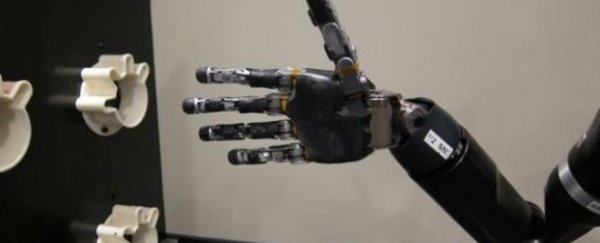Biomedical engineers in the US have developed a new robotic arm, and its actions can be controlled using thoughts alone.
Working with Jan Scheuermann, a woman who has been paralysed from the neck down since 2003, a team at the University of Pittsburgh implanted two tiny electrode grids in Scheuermann's brain that are connected to a computer program. This program has been designed to translate Scheuermann's thoughts into artificial arm movements.
The team, led by researcher Jennifer Collinger, placed the grids in the left motor cortex region of Scheuermann's brain, which is responsible for the movement of her right arm and hand. When she thinks about making certain movements with her own paralysed limb, this brain activity is registered on 96 contact points on the grids and fed into the computer program.
The program then uses algorithms to convert this brain activity into specific electrical pattens that control the robotic arm. You can see it in action in the video above by New Scientist, as it performs complex hand movements to grip a range of differently shaped objects and move them across a table.
"Our project has shown that we can interpret signals from neurons with a simple computer algorithm to generate sophisticated, fluid movements that allow the user to interact with the environment," Collinger told Jim Algar at Tech Times.
The results have been published in the Journal of Neural Engineering.
"The latest version of the algorithm can detect four patterns of activity related to the shape of the hand, adding a scooping shape, thumb extension and a pinching action to the repertoire of possible movements," says Helen Thomson at New Scientist. "The improvements allow Scheuermann to control the artificial limb with 10 degrees of freedom simultaneously."
The plan now is to improve the system and give the robot hand more flexibility, allowing it to perform gestures on command, and more dextrous movements with all kinds of different objects.
This is just one of a bunch of new technologies that came out this year that point to a brighter future for people affected by missing or paralysed limbs. Earlier this month, an international team of researchers announced the development of a new flexible prosthetic skin for use on robotic arms that can sense temperature, pressure and moisture, and in October, a man in Sweden became the first person to be fitted with a mind-controlled prosthetic arm. We can't wait to see what else the future holds for this technology.
Sources: New Scientist, Tech Times
